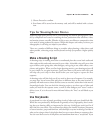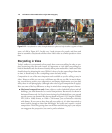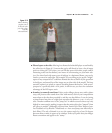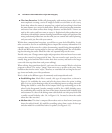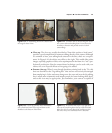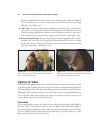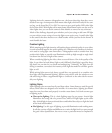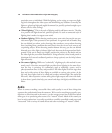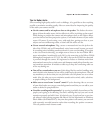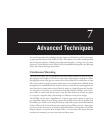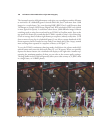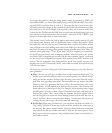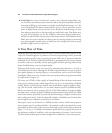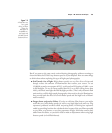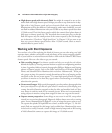Tips for Better Audio
Since recording high-quality audio is such a challenge, it’s a good idea to do everything
possible to maximize recording quality. Here are some ideas for improving the quality
of the audio your camera records:
■ Get the camera and its microphone close to the speaker. The farther the micro-
phone is from the audio source, the less effective it will be in picking up that sound.
While having to position the camera and microphone closer to the subject affects
your lens choices and lens perspective options, it will make the most of your audio
source. Of course, if you’re using a very wide-angle lens, getting too close to your
subject can have unflattering results, so don’t take this advice too far.
■ Use an external microphone. Plug a stereo or monaural mic into the jack on the
side of the D7000, and you’ll immediately enjoy better sound, because you won’t
be recording noises including autofocus motors or your own breathing. If you plan
to do a lot of movie shooting, you might want to invest in the new Nikon ME-1
stereo microphone, introduced in early 2011 at the same time as the Nikon D5100
Although not inexpensive at $179.95, the ME-1 slips on the D7000’s hot shoe and
is powered through the camera. It’s engineered to reduce or eliminate noise from
unintentional contact, has a wind screen, and dampens sound pickup from the cam-
era’s autofocus operation. It includes a cable stop to keep the connecting cable out
of the way during use.
■ Turn off any sound makers you can. Little things like fans and air handling units
aren’t obvious to the human ear, but will be picked up by the microphone. Turn off
any machinery or devices that you can plus make sure cell phones are set to silent
mode. Also, do what you can to minimize sounds such as wind, radio, television,
or people talking in the background.
■ Make sure to record some “natural” sound. If you’re shooting video at an event
of some kind, make sure you get some background sound that you can add to your
audio as desired in postproduction.
■ Consider recording audio separately. Lip-syncing is probably beyond most of the
people you’re going to be shooting, but there’s nothing that says you can’t record
narration separately and add it later. It’s relatively easy if you learn how to use sim-
ple software video-editing programs like iMovie (for the Macintosh) or Windows
Movie Maker (for Windows PCs). Any time the speaker is off-camera, you can work
with separately recorded narration rather than recording the speaker on-camera.
This can produce much cleaner sound.
Chapter 6 ■ Live View and D-Movies 177



